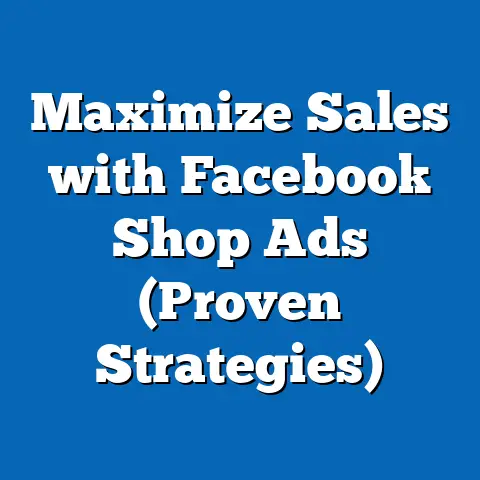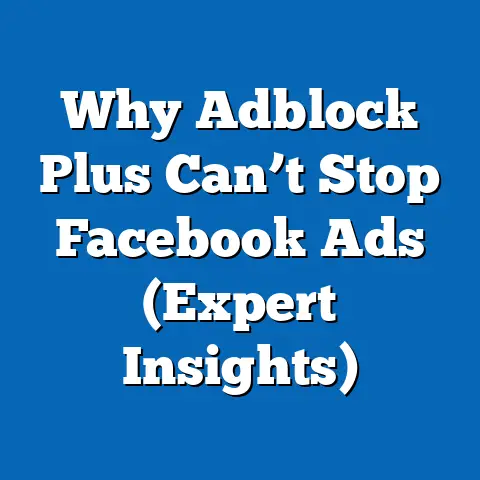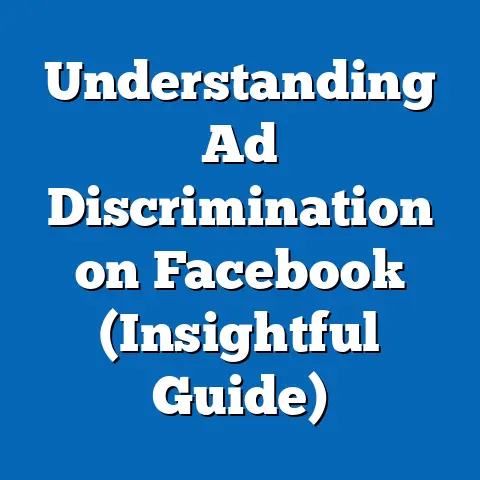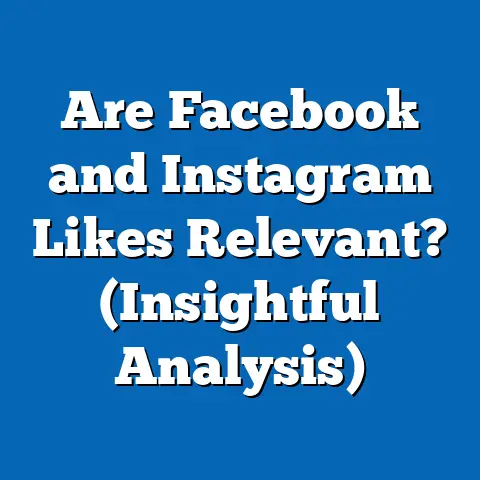Boost Coaching with Facebook Ads (Proven Strategies)
I’ve seen firsthand the incredible impact a well-crafted Facebook ad campaign can have on a coaching business. It’s not just about throwing money at ads; it’s about understanding your audience, crafting compelling messages, and strategically using Facebook’s powerful targeting tools. In this guide, I’ll walk you through proven strategies to leverage Facebook Ads and transform your coaching practice.
The Dilemma: Reaching the Right Clients in a Crowded Market
Imagine Sarah, a passionate life coach with a transformative program designed to help people unlock their full potential. She pours her heart into creating valuable content, workshops, and one-on-one sessions. But despite her expertise and dedication, Sarah struggles to attract a consistent stream of clients. The coaching market is saturated, and she’s overwhelmed by the sheer number of marketing options available. She’s tried blogging, social media posting, and even some networking events, but nothing seems to be consistently bringing in the right clients.
Sarah’s story is not unique. Many coaches, consultants, and entrepreneurs face the same dilemma: how to cut through the noise and reach their ideal audience in a crowded digital landscape. The good news is that Facebook Ads offer a powerful solution.
1. Understanding Facebook Ads for Coaches
Facebook Ads aren’t just for big corporations. They’re a powerful tool for businesses of all sizes, including coaching practices. Facebook, now Meta, boasts billions of active users, making it a prime platform to connect with potential clients. The real magic of Facebook Ads lies in its sophisticated targeting capabilities. You can pinpoint your ideal audience based on demographics, interests, behaviors, and even their connections.
Think about this:
- Vast Reach: Facebook has over 2.9 billion monthly active users (as of early 2024). This provides an unparalleled opportunity to reach a massive audience.
- Targeted Advertising: Facebook allows you to narrow down your audience based on specific criteria. This ensures your ads are seen by people most likely to be interested in your coaching services.
- Measurable Results: Unlike traditional advertising methods, Facebook Ads provide detailed analytics, allowing you to track your campaign’s performance and make data-driven decisions.
I remember when I first started using Facebook Ads for a business coaching client. We were able to target entrepreneurs in specific industries who were interested in leadership development. Within a few weeks, we saw a significant increase in leads and client inquiries. This experience solidified my belief in the power of Facebook Ads for coaching businesses.
Takeaway: Facebook Ads offer a powerful way to reach a targeted audience and drive measurable results for your coaching practice.
2. Defining Your Coaching Niche
Before diving into Facebook Ads, it’s crucial to define your coaching niche. Are you a life coach, business coach, wellness coach, or something else? Narrowing down your niche allows you to create more targeted and effective ad campaigns.
Think of it this way: instead of trying to appeal to everyone, you’re focusing on a specific group of people with specific needs and desires. This makes it easier to:
- Craft Compelling Ad Copy: When you know your target audience intimately, you can write ad copy that speaks directly to their pain points and aspirations.
- Choose Relevant Visuals: Your visuals will resonate more strongly with your target audience if they reflect their interests and lifestyle.
- Target the Right Audience: You can use Facebook’s targeting features to reach people who are specifically interested in your niche.
For example, let’s say you’re a wellness coach specializing in helping busy professionals manage stress. Instead of targeting everyone interested in “wellness,” you can target people who work in high-stress industries like finance or law, and who are interested in stress management techniques like mindfulness or yoga.
I’ve seen clients who initially resisted niching down experience a dramatic improvement in their ad performance once they focused on a specific target audience. It’s counterintuitive, but often, the narrower your focus, the wider your reach.
Takeaway: Defining your coaching niche allows you to create more targeted, relevant, and effective Facebook ad campaigns.
3. Setting Clear Objectives for Your Facebook Ads
What do you want to achieve with your Facebook Ads? Are you looking to generate leads, increase brand awareness, or book more clients? Setting clear objectives is essential for measuring the success of your campaigns.
Here are some common objectives for coaching businesses:
- Lead Generation: Collect contact information from potential clients.
- Website Traffic: Drive traffic to your website or landing page.
- Brand Awareness: Increase awareness of your coaching brand.
- Engagement: Encourage people to like, comment, and share your ads.
- Conversions: Get people to sign up for a free consultation, attend a webinar, or purchase your coaching program.
When setting your objectives, make sure they’re SMART:
- Specific: Clearly define what you want to achieve.
- Measurable: Set quantifiable goals that you can track.
- Achievable: Make sure your goals are realistic.
- Relevant: Ensure your goals align with your overall business objectives.
- Time-bound: Set a deadline for achieving your goals.
For example, instead of saying “I want to get more clients,” you might say “I want to generate 50 leads in the next month from my Facebook ad campaign.”
A clear call-to-action (CTA) is also crucial. What do you want people to do after seeing your ad? Do you want them to “Learn More,” “Sign Up,” “Book a Consultation,” or “Download a Free Guide?” Make sure your CTA is clear, concise, and compelling.
Takeaway: Setting clear, measurable objectives and a strong call-to-action is critical for maximizing the effectiveness of your Facebook ad campaigns.
4. Crafting Compelling Ad Copy
Your ad copy is your opportunity to grab attention, connect with your target audience, and persuade them to take action. Here are some tips for writing effective ad copy for coaches:
- Know Your Audience: Understand their pain points, aspirations, and motivations.
- Highlight the Benefits: Focus on the benefits of your coaching services, not just the features.
- Use Storytelling: Share personal experiences or client success stories to connect with potential clients on an emotional level.
- Keep it Concise: People have short attention spans, so get to the point quickly.
- Use Strong Verbs: Use action words that inspire people to take action.
- Include a Clear Call-to-Action: Tell people exactly what you want them to do.
Here’s an example of effective ad copy for a life coach:
“Feeling stuck in a rut? I help people like you unlock their full potential and live a more fulfilling life. In my coaching program, you’ll learn how to identify your limiting beliefs, set powerful goals, and create a plan to achieve them. Ready to transform your life? Book a free consultation today!”
I’ve found that sharing client testimonials in ad copy can be incredibly effective. When potential clients see that others have benefited from your coaching services, they’re more likely to trust you and take action.
Takeaway: Crafting compelling ad copy that speaks to your target audience’s needs and desires is essential for driving results with your Facebook Ads.
5. Visuals: The Power of Eye-Catching Imagery
Visuals play a crucial role in capturing attention and conveying your message on Facebook. Choose images and videos that are:
- High-Quality: Use professional-looking visuals that are clear, sharp, and well-lit.
- Relevant: Choose visuals that reflect the essence of your coaching brand and resonate with your target audience.
- Eye-Catching: Use visuals that are visually appealing and stand out from the crowd.
- Authentic: Use images and videos that feature real people and real-life situations.
Here are some ideas for visuals that work well for coaches:
- Headshots: Use a professional headshot that conveys confidence and approachability.
- Client Photos: Feature photos of happy clients (with their permission, of course).
- Behind-the-Scenes Videos: Share videos that give people a glimpse into your coaching process.
- Infographics: Create visually appealing infographics that highlight key points from your coaching program.
I once worked with a career coach who used a before-and-after photo in their Facebook ad. The “before” photo showed a person looking stressed and overwhelmed, while the “after” photo showed the same person smiling and confident. The ad generated a huge response because it visually conveyed the transformative power of the coach’s services.
Takeaway: Using high-quality, relevant, and eye-catching visuals can significantly enhance the engagement and effectiveness of your Facebook Ads.
6. Targeting the Right Audience
Facebook’s audience targeting features are incredibly powerful. You can target people based on:
- Demographics: Age, gender, location, education, job title, etc.
- Interests: Hobbies, interests, and activities they’ve expressed on Facebook.
- Behaviors: Purchase history, online activity, and device usage.
- Connections: People who like your Facebook page or are connected to your existing clients.
- Custom Audiences: Upload a list of your existing clients or website visitors to create a custom audience.
- Lookalike Audiences: Create a lookalike audience based on your existing clients or website visitors. Facebook will find people who share similar characteristics.
Here’s an example of how you might target your audience:
Let’s say you’re a business coach specializing in helping small business owners grow their revenue. You could target:
- Demographics: People aged 30-50 who own a small business in your local area.
- Interests: People interested in entrepreneurship, marketing, and sales.
- Behaviors: People who have purchased products or services related to business growth.
A/B testing different audience segments is crucial for optimizing your ad performance. Try targeting different demographics, interests, and behaviors to see which audiences respond best to your ads.
Takeaway: Facebook’s audience targeting features allow you to reach the right people with your ads, maximizing your chances of success.
7. Budgeting and Ad Spend Management
Setting a budget for your Facebook Ads is essential for controlling your costs and maximizing your return on investment. You can choose between a daily budget or a lifetime budget.
- Daily Budget: The average amount you’re willing to spend each day.
- Lifetime Budget: The total amount you’re willing to spend over the entire duration of your campaign.
Here are some tips for managing your ad spend:
- Start Small: Begin with a small budget and gradually increase it as you see positive results.
- Monitor Your Performance: Track your key performance indicators (KPIs) like click-through rate (CTR), cost-per-click (CPC), and conversion rate.
- Adjust Your Bids: Adjust your bids based on your performance. If your ads are performing well, you can increase your bids to reach more people. If they’re not performing well, you can decrease your bids to save money.
- Pause Underperforming Ads: Don’t be afraid to pause ads that aren’t generating results.
Understanding the cost-per-click (CPC) and return on ad spend (ROAS) is essential for optimizing your budget. CPC is the amount you pay each time someone clicks on your ad. ROAS is the amount of revenue you generate for every dollar you spend on advertising.
Takeaway: Setting a budget, monitoring your performance, and adjusting your bids are essential for managing your ad spend and maximizing your return on investment.
8. Analyzing Ad Performance and Metrics
Tracking your ad performance is crucial for understanding what’s working and what’s not. Facebook provides a wealth of data that you can use to optimize your campaigns.
Here are some key performance indicators (KPIs) that coaches should track:
- Impressions: The number of times your ad is shown to people.
- Reach: The number of unique people who see your ad.
- Click-Through Rate (CTR): The percentage of people who click on your ad after seeing it.
- Cost-Per-Click (CPC): The amount you pay each time someone clicks on your ad.
- Conversion Rate: The percentage of people who take the desired action after clicking on your ad (e.g., signing up for a free consultation).
- Cost-Per-Acquisition (CPA): The amount you pay to acquire a new client.
- Return on Ad Spend (ROAS): The amount of revenue you generate for every dollar you spend on advertising.
Use Facebook’s analytics tools to measure your ad success and gather insights. You can track your performance over time, compare different ad campaigns, and identify areas for improvement.
Takeaway: Analyzing your ad performance and metrics is essential for making data-driven decisions and optimizing your Facebook ad campaigns.
9. Case Studies of Successful Coaching Ads
Let’s look at some real-world examples of coaches who have successfully used Facebook Ads to boost their practice:
- Case Study 1: Life Coach Generating Leads: A life coach used Facebook Ads to generate leads for her online coaching program. She targeted people interested in personal development and mindfulness. Her ad copy highlighted the benefits of her program, and her visuals featured photos of happy clients. She generated over 100 leads in the first month, and her conversion rate was 10%.
- Case Study 2: Business Coach Booking Clients: A business coach used Facebook Ads to book clients for his one-on-one coaching sessions. He targeted small business owners in his local area. His ad copy focused on the challenges faced by small business owners, and his visuals featured a professional headshot. He booked 10 new clients in the first two months, generating $5,000 in revenue.
- Case Study 3: Wellness Coach Building Brand Awareness: A wellness coach used Facebook Ads to build brand awareness for her coaching practice. She targeted people interested in healthy living and stress management. Her ad copy shared valuable tips and advice, and her visuals featured inspiring images of nature. She increased her Facebook page followers by 500% in the first three months.
These case studies highlight the potential of Facebook Ads to transform coaching businesses. By focusing on the right audience, crafting compelling ad copy, and using eye-catching visuals, you can achieve similar results.
Takeaway: Studying successful coaching ad campaigns can provide valuable insights and inspiration for your own Facebook ad strategies.
10. Conclusion: The Path Forward
Facebook Ads offer a powerful way to reach your target audience, generate leads, book clients, and build brand awareness for your coaching practice. By understanding the fundamentals of Facebook Ads, defining your coaching niche, setting clear objectives, crafting compelling ad copy, using eye-catching visuals, targeting the right audience, managing your ad spend, and analyzing your ad performance, you can create effective campaigns that drive results.
I encourage you to take actionable steps towards implementing these strategies. Start by defining your coaching niche and setting clear objectives. Then, experiment with different ad copy, visuals, and targeting options. Track your performance, make adjustments, and don’t be afraid to ask for help.
Remember, success with Facebook Ads is a gradual process. It takes time, effort, and experimentation. But with persistence and a strategic approach, you can unlock the full potential of Facebook Ads and transform your coaching business. The future of coaching is bright, and effective advertising plays a key role in achieving your business goals. So, take the leap, embrace the power of Facebook Ads, and watch your coaching practice flourish.






